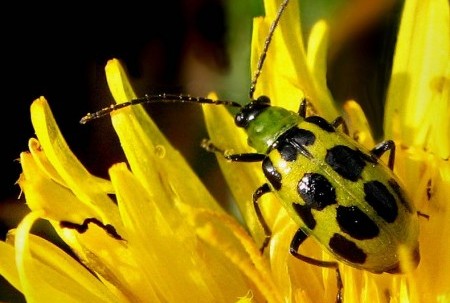Return of the pests
It’s easy at this time of year to get carried away with excitement for new life and fresh growth, but it’s important to remember that some of that life belongs to pests that can cause headaches for farmers. In the past few weeks, the wily cast of major pest characters has sprung back into action in the fields.
Organic farmers deal with many pests constantly. Flea beetles and a variety of moths and butterflies are a constant scourges to our brassicas. Cucumber beetles eat just about anything but especially love beets, chard, cucumbers and squash. A host of other caterpillars, gnats, mites, and worms enter into the mix throughout the season as antagonists to one crop or another.
All farmers take pest control seriously. But for us, that doesn’t mean comprehensive insecticide spraying. Instead, we take a less caustic but more laborious approach. We use physical barriers to keep pests off crops, place our crops strategically to outwit pests, introduce beneficial insects to prey on the less friendly ones, and even patrol the fields with a leaf-blower-turned-vacuum when the situation is dire.
Cucumber beetles are an invasive insect that have become well-established throughout North America. They present a major problem for organic vegetable growers.
Monitoring is a real trick when all pests having unique lifecycles, or even multiple generations in a growing season. They can also transmit fungal and bacterial diseases! Many are wise beyond belief, recognizing when a crop is stressed or has a surplus of some tasty nutrient.
In some ways, pest presence is a comfort. It means that our land is an environment conducive to life beyond that of our crops. Pest management is an integrated part of our farming plan, so we are confident we will be able to manage whatever the season throws at us. That’s part of mixed vegetable farming. But we’ll let you know along the way how pests are affecting us this season. They always do.
—————–
We’re capturing interesting moments this season and sharing them here to help you learn where your food comes from. Follow Story of a Season on our blog or on Instagram with #storyofaseason.
This story was originally published as part of our CSA newsletter, the Eater’s Digest. Interested in joining our CSA? Learn more about becoming a member.

